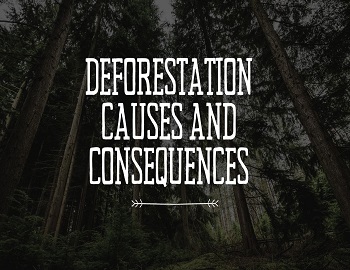Table of Contents
Forest and Wildlife Resources: Important Points
- Forests play a key role in the ecological system as these are also the primary producers on which all other living beings depend.
- Biodiversity or Biological Diversity– refers to the variety and variability among all groups of living organisms and the ecosystem complexes in which they occur.
- Shannon-Wiener index and Simpson index– popular indices for measuring species diversity.
- The International Union for Conservation of Nature and Natural Resources (IUCN) publishes the Red Data Book which includes the list of endangered species of plants and animals.
- Let us now understand the different categories of existing plants and animal species. Based on the IUCN, we can classify as follows-
Normal Species:
Species whose population levels are considered to be normal for their survival such as cattle, sal, pine, rodents.
Endangered Species:
These are species that are in danger of extinction. The survival of such species is difficult if the negative factors that have led to a decline in their population continue to operate. Examples of such species are blackbuck, crocodile, Indian wild ass, Indian rhino, lion-tailed macaque, sangai (brow-antlered deer in Manipur), etc.
Vulnerable Species:
These are species whose population has declined to levels from where it is likely to move into the endangered category in the near future if the negative factors continue to operate. Examples of such species are blue sheep, Asiatic elephant, Gangetic dolphin, etc.
Rare Species-
Species with a small population may move into the endangered or vulnerable category if the negative factors affecting them continue to operate. Examples of such species are the Himalayan brown bear, wild Asiatic buffalo, desert fox, and hornbill, etc.
Endemic Species:
These are species that are only found in some particular areas usually isolated by natural or geographical barriers. Examples of such species are the Andaman teal, Nicobar pigeon, Andaman wild pig, Mithun in Arunachal Pradesh.
Extinct Species:
These are species that are not found after searches of known or likely areas where they may occur. A species may be extinct from a local area, region, country, continent, or the entire earth. Examples of such species are the Asiatic cheetah, pink head duck.
Hotspots of Biodiversity-
- Areas that exhibit high species richness, as well as high species endemism, are termed as hotspots of biodiversity.
- The term was introduced by Myers (1988).
- 4 Biodiversity Hotspots in India- the Himalayas, the Western Ghats, the Indo-Burma region, and the Sundaland (includes Nicobar group of Islands).
Types of Forests:
Tropical Evergreen Forest:
- Also called Tropical rain forests.
- Found in the western slope of the western ghats (especially the Malabar coast), hills of the northeastern region and the Andaman & Nicobar Island. Also Silent Valley in Kerala.
- Found in warm & humid areas.
- Annual precipitation of over 200 cm.
- Mean annual temperature above 22 degree celsius.
- Well stratified i.e. arranged in different layers – the lower strata consists of mosses, ferns & grasses; the middle layer has a dense growth of shrubs & the topmost layer consists of the large trees.
- Termites, fungi, mushrooms etc. grow on the ground layer.
- Warm temperature and high availability of moisture facilitate rapid breakdown (decomposition) of the dropped leaves, twigs etc. releasing the nutrients rapidly.
- These nutrients are immediately taken up by the mycorrhizal roots of the trees.
- Trees reach great heights up to 60m or above.
- Due to continuous rainfall throughout the year, the trees do not shed their leaves all at the same time & hence such forests are called as evergreen forests.
- Species – Rosewood, Mahogony, Aini, Ebony etc.
- Semi-evergreen forest – mixture of evergreen and moist deciduous trees. Main species are White cedar, Hollock & Kail.
- The tropical evergreen forest in Brasil is so enormous that it is like the lungs of the earth.
- Shifting cultivation & colonial exploitation of timber, especially during the first and second world war have seriously depleted these forests.
Tropical Deciduous Forest:
- Also called Monsoon forests.
- Most widespread forests in India.
- Receive rainfall between 70-200 cm.
- The characteristic feature of deciduous vegetation is that the trees shed their leaves for six to eight weeks at the beginning of the summer season.
- Divided into moist and dry deciduous on the basis of availability of water.
Moist Deciduous Forest:
- These forests occur where the rainfall is around 100-200 cm.
- Found in the northeastern states along the foothills of Himalayas, eastern slopes of the western ghats, and Orissa.
- Main species- Teak (tectona grandis), sal, shisham, hurra, mahua, amla, semul, kusum & sandalwood, etc.
Dry Deciduous Forest:
- These forest occur where the rainfall is around 70-100 cm.
- Found in the plains of Uttar Pradesh, Bihar & West Bengal, most of the areas of the Deccan plateau and in the rain shadow areas of western ghats.
- Main species- Tendu, palas, amaltas, bel, khair, axlewood etc.
Tropical Thorn Forest:
- Receive rainfall less than 50 cm.
- Consist of variety of grasses and shrubs.
- Scrub Vegetation – plants remain leafless for most part of the year.
- Found in semi-arid areas of south west Punjab, Haryana, Rajasthan, Gujarat, M.P. & U.P.
- Main species- babool, ber, wild date palm. khair, neem, khejri, palas etc.
- Tussocky grass grows upto a height of 2 m as undergrowth.
Mangrove Forest:
- Also called a tidal or deltaic forest.
- The mangrove forests develop when there is an intermixing of the freshwater of the rivers & the saline water of the seas. Such an area is called brackish water habitat.
- play a crucial role in supporting the ecological balance.
- It can regenerate and propagate very fast.
- These have an important role in arresting tidal waves and minimizing the impact of natural disasters like tsunamis and also to arrest coastal erosion.
- As compared to terrestrial trees, mangroves are known to absorb carbon-dioxide faster and are termed as ‘carbon sinks’.
- Mangrove forests are regarded as the most productive wetlands in the world on account of the large quantities of organic and inorganic nutrients released in the coastal waters by these ecosystems.
- Two sites – Chilika Lake (Orissa) & Keoladeo National Park (Bharatpur) are protected as water-fowl habitats under the Convention of Wetlands of International Importance (Ramsar Convention).
- They also act as nurseries for finfish, shellfish, crustaceans, and molluscs.
- Mangroves are highly developed in Andaman & Nicobar island, Sunderbans of West Bengal.
- Other areas of significance are the Mahanadi, the Godavari, and the Krishna deltas.
Depletion of Forests:
- The greatest damage inflicted on Indian forests was during the colonial period due to the expansion of the railways, agriculture, commercial and scientific forestry, and mining activities.
- Even after Independence, agricultural expansion continues to be one of the major causes of the depletion of forest resources.
- Substantial parts of the tribal belts, especially in the north-eastern and central India, have been deforested or degraded by shifting cultivation (jhum), a type of ‘slash and burn‘ agriculture.
- Teak monoculture has damaged the natural forest in South India and Chir Pine plantations in the Himalayas have to replaced the Himalayan oak.
- Large-scale development projects have also contributed significantly to the loss of forests.
- Narmada Sagar Project in Madhya Pradesh, which would inundate 40,000 hectares of forest.
- Mining is another important factor behind deforestation.
- The Buxa Tiger Reserve in West Bengal is seriously threatened by dolomite mining.
- The Himalayan Yew is a medicinal plant found in various parts of Himachal Pradesh and Arunachal Pradesh. A chemical compound called ‘taxol‘ is extracted from the bark, needles, twigs, and roots of this tree, and it has been successfully used to treat some cancers. The species is under great threat due to over-exploitation.
- Habitat destruction, hunting, poaching, over-exploitation, environmental pollution, poisoning, and forest fires are factors, which have led to the decline in India’s biodiversity.
- Other important causes of environmental destruction are unequal access, inequitable consumption of resources, and differential sharing of responsibility for environmental well-being.
- The destruction of forests and wildlife is not just a biological issue. The biological loss is strongly correlated with the loss of cultural diversity. Such losses have increasingly marginalized and impoverished many indigenous and other forest-dependent communities, who directly depend on various components of the forest and wildlife for food, drink, medicine, culture, spirituality, etc.
Methods for the Conservation of Forests:
- Modern management practices such as optimization of silvicultural and nutritional requirements including the use of irrigation, fertilizers, bacterial and mycorrhizal inoculations, disease, and pest management, control of weeds have to be adopted.
- The forests can be conserved by reforestation, pest and fire control and block cutting. The annual deforestation should be followed by reforestation of the deforested areas.
- Forest fire should be prevented by forest authorities.
- There should be a proper control on the overgrazing by wildlife.
- The better varieties of trees should be allowed to interbreed to increase their number at a rapid rate.
- The forests should be protected from the effects of viruses, fungi, and pests. It can be done by the use of certain chemicals like fungicides and pesticides.
- The use of firewood should be discouraged to reduce pressure on more valuable natural forests. Other sources of energy such as biogas have to be encouraged.
Conservation of Wildlife:
For the judicious use of resources, the scientists from nearly 100 countries of the world have formulated some conservation strategies. Few of the steps proposed to save the existing species of the wildlife are given below-
- Every effort should be made to preserve the endangered species; these species should be given priority over a vulnerable one, a vulnerable species over a rare one, and a rare species over other categories.
- Proper management and planning should be made to preserve wildlife in their natural habitat (in situ) and in zoos and national parks (ex situ).
- A wide range of varieties of livestock, animals for aquaculture, and their wild varieties should be preserved and priority should be given to those that are most threatened and needed for national and international breeding programmes.
- Each country should locate the habitats of wild relatives of the economically valuable and useful animals and ensure their preservation in protected areas.
- The feeding, breeding, nursery, and resting areas of species should be safeguarded.
- In the case of migratory animals, a network of protected areas should be established to preserve their habitats. For those species which migrate from one national jurisdiction to another, bilateral or multilateral agreements should be made to meet out the required network.
- The unique ecosystem should be protected as a matter of priority.
- The national protection programmes should be coordinated with international programmes like UNESCO’s Man and Biosphere Project and national parks and protected areas of the International Union for Conservation of Nature and Natural Resources. This would safeguard the genetic diversity and their continuing evolution.
- The productive capacities of species should be determined so that their utilization should not exceed those capacities.
- Proper legislative and administrative measures should be taken to regulate the international trade of wild animals.
National Park:
- A National Park is an area dedicated for the conservation of wildlife along with its environment.
- It is also meant for enjoyment through tourism but without impairing the environment.
- Grazing of domestic animals, all private rights and forestry activities are prohibited within a National Park.
- Each National Park usually aims at conservation specifically of some particular species of wildlife along with others.
- India’s first national park was established in 1936 as Hailey National Park, now known as Jim Corbett National Park, Uttarakhand.
Some major National Parks of our country are-
| Name of National Park | Important Wildlife |
|---|---|
| Kaziranga (Assam) | One-horned Rhino |
| Gir National Park (Gujarat) | Indian Lion |
| Dachigam (J&K) | Hangul |
| Bandipur (karnataka) | Elephant |
| Periyar (Kerala) | Elephant, Tiger |
| Kanha (M.P.) | Tiger |
| Corbett (Uttarakhand) | Tiger |
| Dudwa (U.P.) | Tiger |
| Ranthambore (Rajasthan) | Tiger |
| Sariska (Rajasthan) | Tiger |
Wildlife Sanctuaries:
- Wildlife sanctuaries are also protected areas where killing, hunting, shooting or capturing of wildlife is prohibited except under the control of highest authority.
- However, private ownership rights are permissible and forestry operations are also permitted to an extent that they do not affect the wildlife adversely.
Some major wildlife sanctuaries of our country are-
| Name of Sanctuary | Major Wildlife |
|---|---|
| Ghana Bird Sanctuary (Rajasthan) | 300 species of birds (including migratory) |
| Hazaribagh Sanctuary (Bihar) | Tiger, Leopard |
| Sultanpur Bird Sanctuary (Harayana) | Migratory birds |
| Nal Sarovar Bird Sanctuary (Gujarat) | Water birds |
| Abohar Wildlife Sanctuary (Punjab) | Black buck |
| Mudamalai Wildlife Sanctuary (Tamil Nadu) | Tiger, Elephant, Leopard |
| Vedanthangal Bird Sanctuary (Tamil Nadu) | Water birds |
| Jaldapara Wildlife Sanctuary (West Bengal) | Rhinoceros, elephant, Tiger |
| Wild Ass Sanctuary (Gujarat) | Wild ass, wolf, nilgai, chinkara |
| Manas Wildlife Sanctuary (Assam) | Rhinoceros, elephant, wild buffaloes etc. |
Biosphere Reserves:
- A Biosphere Reserve is a unique and representative ecosystem of terrestrial and coastal areas that are internationally recognized within the framework of UNESCO’s Man and Biosphere (MAB) Programme.
- The MAB was launched in 1971 to catalyze a greater understanding and provision of knowledge and skills to support sustainable relationships between people and their environment.
The objectives of Man and Biosphere Programme are as follows-
- Conserve representative samples of all ecosystems and habitat types.
- Provide long term in-situ conservation of genetic diversity.
- Promote and facilitate basic and applied research and monitoring wildlife.
- Promote mass education, awareness, and capacity building.
- Promote appropriate sustainable management of natural resources.
- Dissemination of experience so as to promote sustainable development elsewhere.
- Biosphere management mandates people’s participation in the conservation of natural resources and shopping of national landscape.
- In a Biosphere Reserve, the land is designated into different zones, these are the core zone ( where no human activity is allowed), the buffer zone ( where limited human activity is allowed), and the manipulation zone (where a large number of human activity may go on).
- Nilgiri is the first biosphere reserve of India established in 1986.
- Biosphere Reserves have the following functions:
- Helpful in the conservation of ecosystems, species, and other resources.
- Helpful in the promotion of economic development.
- Helpful in promoting scientific research and development.
| Biosphere Reserve | Location |
|---|---|
| Nilgiri | Tamil Nadu, Kerala and Karnataka. |
| Nanda Devi | Uttarakhand |
| Nokrek | Part of Garo Hills (Meghalaya) |
| Manas | Assam |
| Sunderbans | Part of the delta of Ganges and Brahmaputra river system ( West Bengal) |
| Gulf of Mannar | Tamil Nadu |
| Great Nicobar | Southernmost islands of the Andaman and Nicobar |
| Similipal | Orissa |
| Dibru-Saikhowa | Assam |
| Dihang Dibang | Arunachal Pradesh |
| Kanchenjunga | Parts of North and West Sikkim |
| Pachmari | Madhya Pradesh |
| Agasthyamalai | Kerala |
| Achanakmar-Amarkantak | Madhya Pradesh and Chattisgarh |
Rio de Janeiro Earth Summit,1992:
- The Earth Summit held at Rio De Janeiro, Brazil in June 1992 was primarily held to discuss the problems of deforestation, air, and marine pollution and other environmentally interrelated threats facing the earth.
- The assembled leaders signed the Declaration on Global Climatic Change and Biological Diversity.
- The Rio Convention endorsed the global Forest Principles and adopted Agenda 21 for achieving Sustainable Development in the 21st century.
Agenda 21:
- It is the declaration signed by world leaders in 1992 at the United Nations Conference on Environment and Development (UNCED), which took place in Rio de Janeiro, Brazil.
- It aims at achieving global sustainable development.









Comments (No)